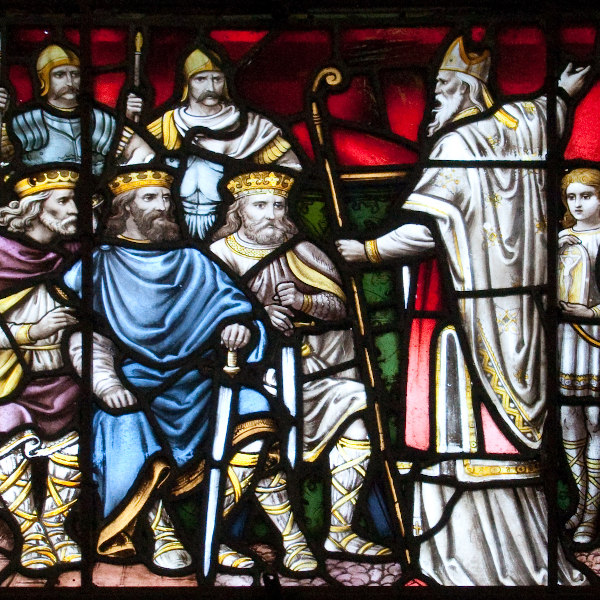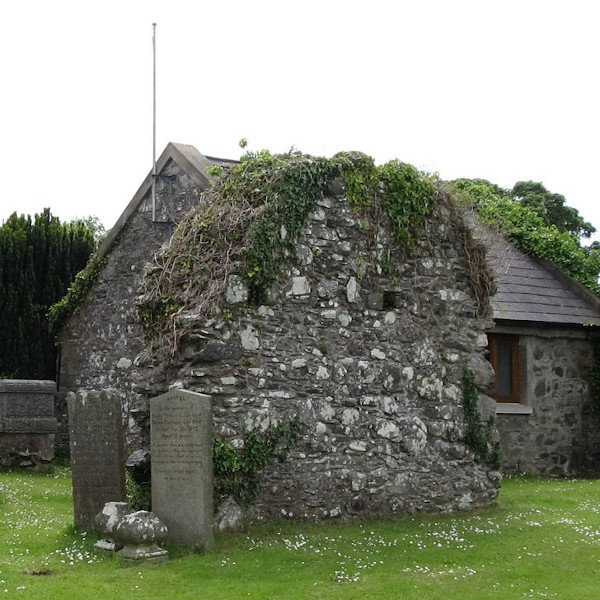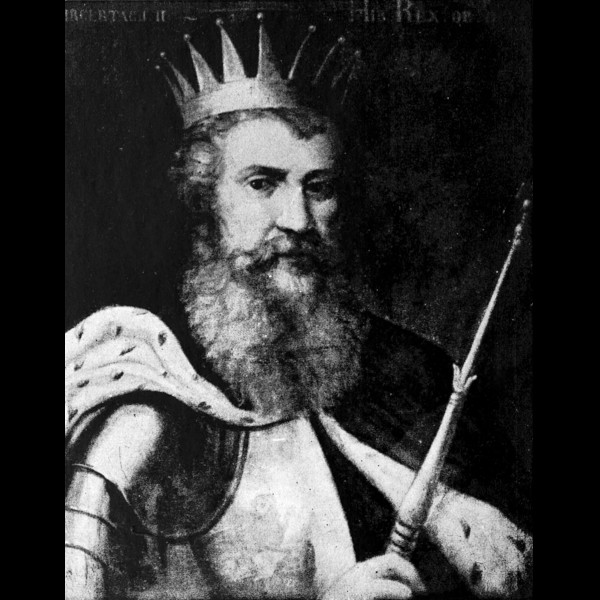DNA spotlight
Saint Patrick: Glastonbury Abbey and Saul Monastery

Saint Patrick was born Maewyn Succat in Roman Britain, specifically Wales, just across the sea from Ireland around 400 AD and the son of a fairly well off family - his father was a church deacon. 16 year old Patrick was captured by slave traders and sent to Ireland as a slave to tend sheep - likely in County Mayo. He prayed daily to return home and one day he heard a voice telling him it was time to head back and a ship would be waiting. After fleeing his captors by foot and walking 200 miles he reached the coast where indeed a ship was about to leave. The pagan sailors initially refused to assist him but changed their minds after he prayed for a safe return. Patrick escaped to Britain after 6 long years in captivity and was reunited with his parents.

He became a deacon like his father but then had another vision of man from Ireland asking for help - Patrick decided his calling was to return to Ireland and spread Christianity. Upon arrival in Ireland He felt an alien among barbarians and it was not an easy task but he made this his life long goal for the next 30 years. Saul Monastery, shown here, is located in Count Down Northern Ireland and was founded by Saint Patrick himself. This monastery is also where Patrick ultimately died on the 17th of March and was buried in the town of Downpatrick. Today the same 17th of March is known as Saint Patricks Day. The monastery survived for three centuries before being destroyed by Viking raiders. A stone church was built in its place in 1020 AD

However in 1164, Saul was plundered by Muirchertach Mac Lochlainn shown here. Mac Lochlainn was king of Sir Eoghain and High King of Ireland from 1156 until 1166. He survived numerous attempts to unseat him from power especially from the two Irish kingdoms of Ulaid and Cenel Conaill. Ultimately he made a truce and gave an oath for his good behaviour. Catching his opponents off guard, he had his rival the king of Ulaid seized and blinded. Afterwards Patricks allies largely abandoned him. He was killed by his enemies and the death attributed as the vengeance of Saint Patrick.
Saint Patrick traveled all over Ireland but eventually visited Britain as well and in particular went to Glastonbury Abbey shown here. He was joined by a bank of monks who elected him their Abbot. In the year 1191 supposedly the bodies of King Arthur and his Queen were said to have been found on the south side of the chapel. Numerous stories and legends surround Patrick - one explains how Patrick rid Ireland of all its snakes. Another story explains how St. Patrick would pick up shamrocks and tell locals the three leaves represented the son, father and Holy Ghost. The samples in this Spotlight all share the same Haplogroup subclade with the House of Normandy and Muirchertach Mac Lochlainn. If you match this ties your DNA to these fabulous locations as well as to Saint Patrick - happy Saint Patricks Day!
Sample: Medieval Ireland Kilteasheen
- Sample ID: KIL014
- Year: 650 AD
- Sex: Male
- Location: 54.0055,-8.2049
Sample: Medieval Ireland Kilteasheen Roscommon Bishops Seat
- Sample ID: KIL041
- Year: 650 AD
- Sex: Male
- Location: 54.0055,-8.2049
Sample: Medieval Ireland Kilteasheen Roscommon Bishops Seat
- Sample ID: KIL044
- Year: 650 AD
- Sex: Male
- Location: 54.0055,-8.2049
Sample: Medieval Mutant Ballyhanna County Donegal Ireland
- Sample ID: HAN197
- Year: 840 AD
- Sex: Male
- Location: 54.4988344,-8.173805
Sample: Celtic Dibbles Farm Somerset England
- Sample ID: I16592
- Year: 252 BC
- Sex: Male
- Location: 51.313891,-2.885217
Sample: Celtic Briton Pocklington Yorkshire England
- Sample ID: I5509
- Year: 225 BC
- Sex: Male
- Location: 53.919396,-0.766635
Sample: Iron Age Briton Worlebury Camp Somerset England
- Sample ID: I11142
- Year: 115 BC
- Sex: Male
- Location: 51.416667,-3.466667
Sample: Iron Age Trethellan Farm Cornwall
- Sample ID: I16458
- Year: 100 BC
- Sex: Male
- Location: 50.203523,-5.199698
Sample: Late Iron Age Gloucestershire Britain
- Sample ID: I12927
- Year: 125 AD
- Sex: Male
- Location: 51.95241,-2.078732
